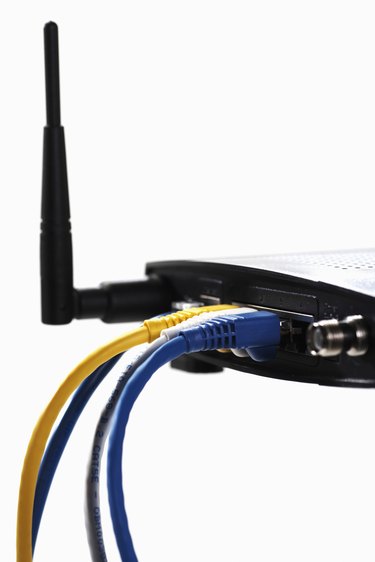
Wireless technology allows data to transmit throughout your home or office building without the need to run multiple cables. Wireless repeaters help extend the range of your wireless router. These are helpful in large buildings and homes, such as where the router is located in the basement but bedrooms on the second floor need wireless connections. Setting your repeater to universal mode allows it to work with access-point or client-bridge setups, making installation easier by not requiring you to enter information specific to your network type.
How Repeaters Work
Video of the Day
Wireless repeaters with universal repeater mode boost the wireless signal of your router, regardless of whether you use a network with access points or client bridges. Place the repeater near the edge of your wireless router's signal, or farther away if you're adding to your range with a client bridge, and it will pick up the original signal and transmit it outward from its location, extending the range of the router's signal. This can double the range of the router in the direction where the repeater is placed.
Video of the Day
Problems With Repeaters
Although wireless repeaters help you solve the problem of weak wireless signals at the outer range of your wireless router, they can also cause a problem with overlap. The repeater sends out its signal multidirectionally, as does the router, also known as the access point. The repeater picks up the router's signal, but sends it back toward the router as well as farther away from the router. When the signal is bounced back to the router, this can slow down the wireless signal as the router processes the echo effect.
Fix for the Problem
To alleviate the problem with overlap, some networks use a client bridge. These bridges basically connect the router to the wireless repeater, which is placed far enough away to prevent overlap. Bridges are especially useful when connecting offices in a separate, nearby building to an access point in the company's main building, but they are useful in home situations as well, when you need wireless network access from a detached garage or workshop, for example. However, some wireless repeaters make you choose your network type: access points or client bridges. You must know all the connection details of the networks to set up these repeaters. Repeaters with universal mode work with both types of networks simultaneously.
Universal Repeaters
Some wireless repeaters offer a universal repeater mode. This alleviates the need to choose your network type -- helpful if you're unsure of the network type, or if you plan to expand to a different network type in the future. On your client portal page, choose "Universal Repeater Mode" to allow it to connect to either your access point or client bridge. You'll still need to enter basic network information, such as your IP address.